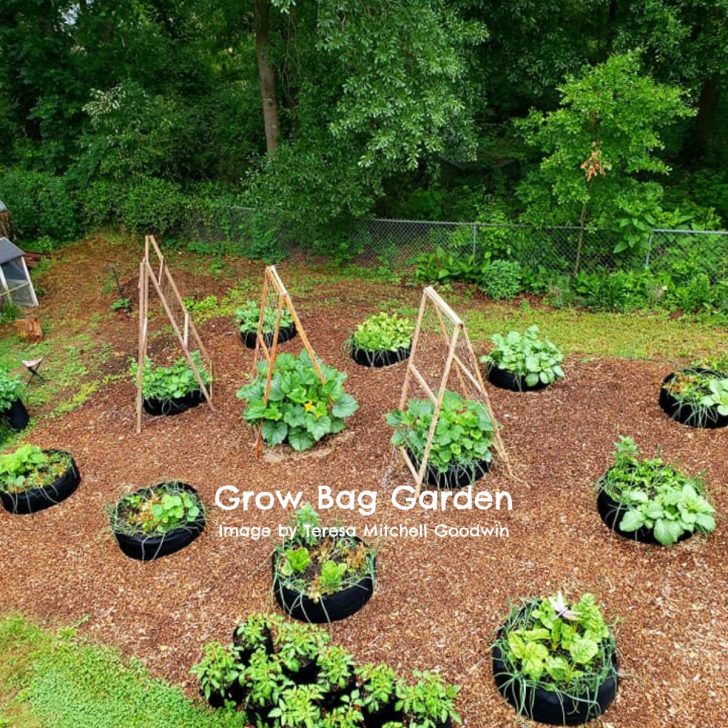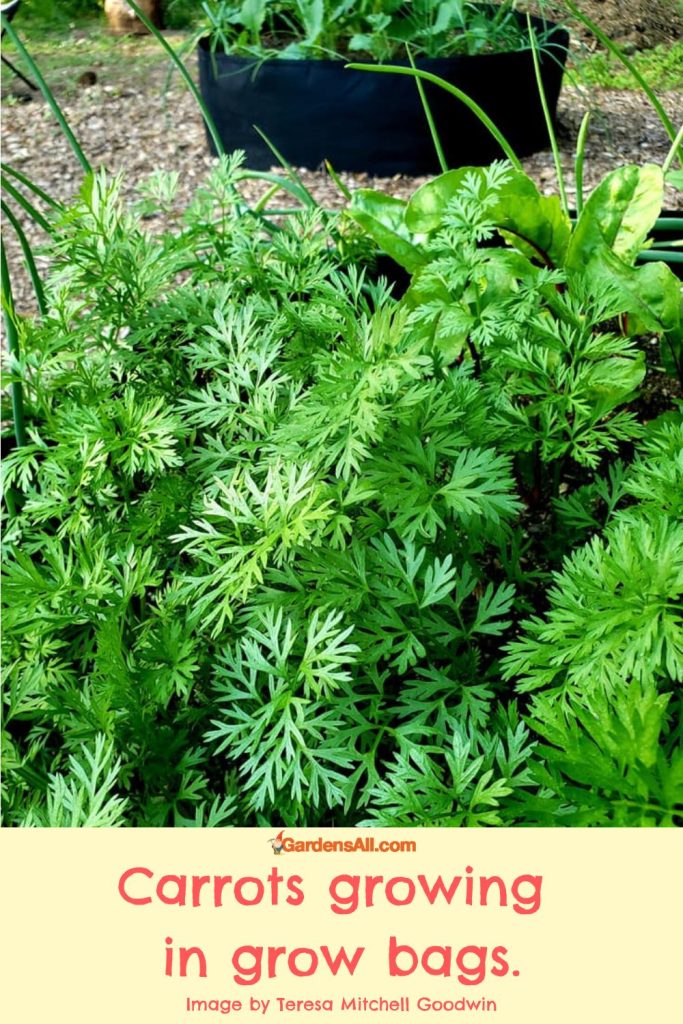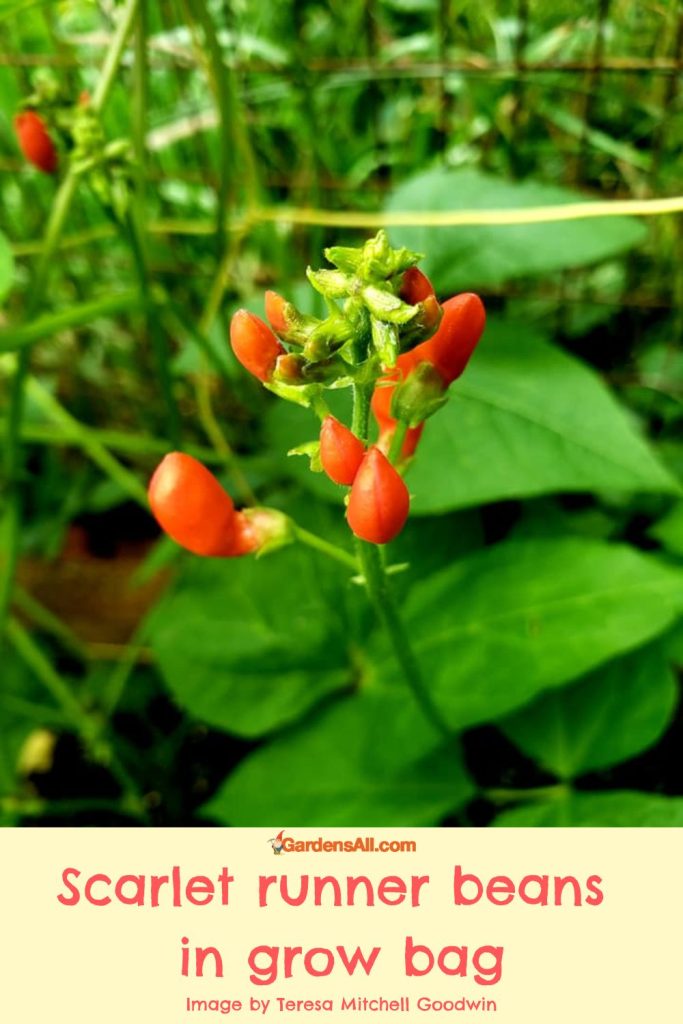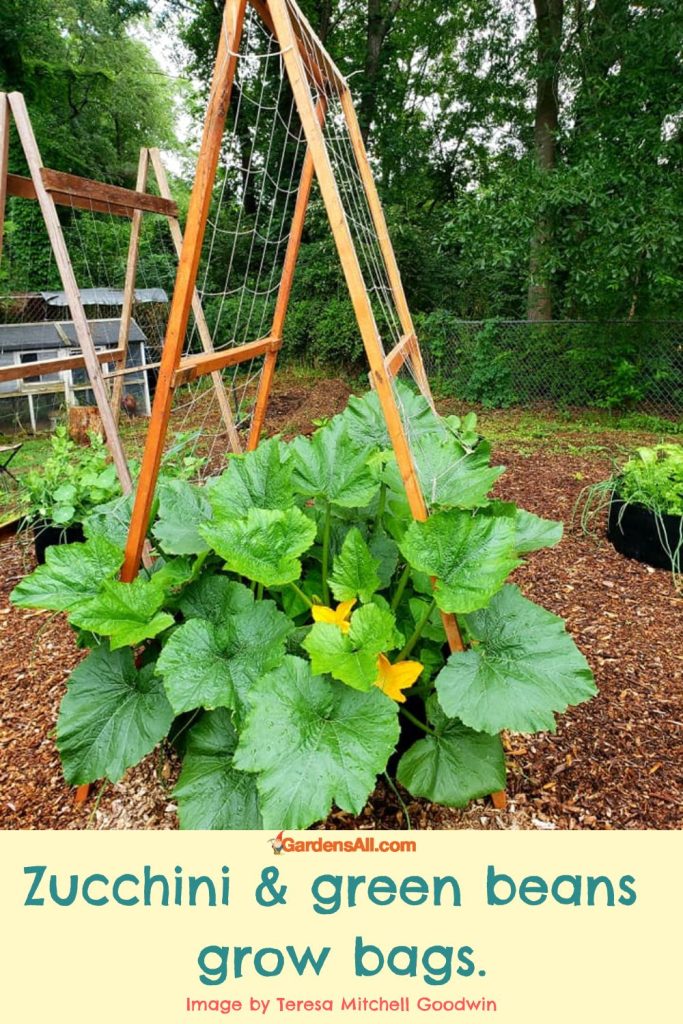Need More Gardening Space or a Mobile Garden?
Grow bag gardening is a simple way to get started growing your own food or expand an existing garden space. You can use individual grow bags and also the grow bag fabric raised garden beds.
Gardeners love to plant things, whenever and wherever they can. We’ve seen plants in shoes and teacups, pallets and wine bottles, amongst many other creative receptacles. Folks who love to garden won’t let a shortage of space or soil to till stop them from gardening.
We’ve published several articles on unique ways to grow when space is an issue, such as plant towers, or cattle panels, planters and soil bag gardening, indoors and out. Or you can pour soil into a burlap or wheelbarrow for something with a little more rustic charm.
Where there’s a will, there’s a way to grow some of your own food, even if it’s starting with growing microgreens or sprouts, (and check out the difference between microgreens vs sprouts here).
Sources for Good Grow Bags
You can buy grow bags in all shapes and sizes, and there are also a number of free sources for grow bags.
- Burlap bags
- Conference bags / Shopping bags
- Feed sacks
- Grow bags you can buy
- Tote bags such as those used for:
- conference bags
- shopping bags
- Fabric raised grow bag garden beds are also available, such as pictured above
“I use the feed sacks from our chicken feed. Mine have held up for three years so far. Everything seems to grow well in them.”
~Bren Lieske
Deciding What to Grow in Grow Bags
Deciding what vegetables to grow, naturally depends on a number of factors, including what foods you love, what produce you buy most, and then — amongst those — which veggies will grow best in your hardiness zone.
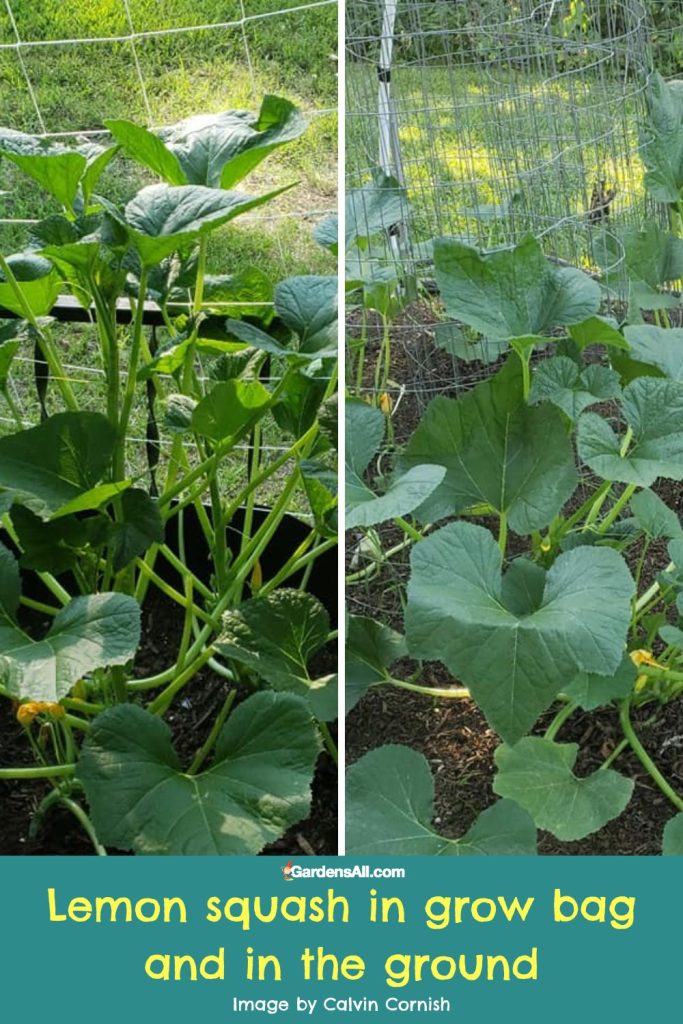
Vegetables Good for Grow Bag Gardening
It would be easier to make a list of things you probably shouldn’t try growing in grow bags! The list of plants to grow in grow bags is huge, so this is just a start.
- Cucumbers
- Eggplant
- Greens, such as:
- chard
- kale
- salad – all kinds of salad greens
- Herbs, such as:
- basil
- cilantro
- oregano
- thyme
- parsley
- Peppers –
- chili peppers
- sweet peppers
- bell peppers
- marconi
- pepperoncini
- Potatoes, all kinds –
- potatoes, indeterminate varieties do best
- sweet potatoes
- Squash –
- summer squash
- zucchini
- Tomatoes, most varieties, including:
- cherry tomatoes
- roma tomatoes
- sandwich tomatoes
Can You Grow Winter Squash in Grow Bags? How About Melons in Grow Bags?
Sprawling vining plants like winter squash and melons, can work in grow bags if you have space outside the grow bag to allow them to spill over and sprawl onto the ground. Alternatively, you can place the grow bag at the based of a trellis or cattle panel system and train the vines to climb the trellis that’s located outside of the grow bags.
In fact, you can place several grow bags of winter squash at the base of a cattle panel or other vertical garden system, such as one bag near each corner.
Vegetables Not to Grow in Grow Bags
Any really tall and spindly vegetable or sprawling vegetables and fruits may not be the best for grow bags, However, there are exceptions, which we’ll note below.
- Amaranth
- Corn
- Jerusalem artichokes / sunchokes
- Melons*
- Okra (although dwarf okra should work)
- Sunflowers
- Winter squash, pumpkins, etc*
*See not on growing winter squash in grow bags.
What Else to Grow in Grow Bags?
You can grow pretty much anything in grow bags.
- Flowers
- Fruit trees (Yes!… you can even grow fruit trees in containers, such as dwarf meyer lemon trees
- Strawberries
Strawberries is one fruit that can grow well using the grow bag gardening method. The shallow and wide grow bag, or fabric garden beds work well for strawberries. Alternately, you can cut slits in the side of a taller grow back to give more room for your strawberries to expand.
Growing Potatoes in Grow Bags
Small yield but my experiment of growing potatoes in tote bags worked. I started them inside on 5 February and moved them outside a few weeks later. ![]() Wonder what else I can grow in tote bags? They are free or cheap.
Wonder what else I can grow in tote bags? They are free or cheap.
~Jackie Henry
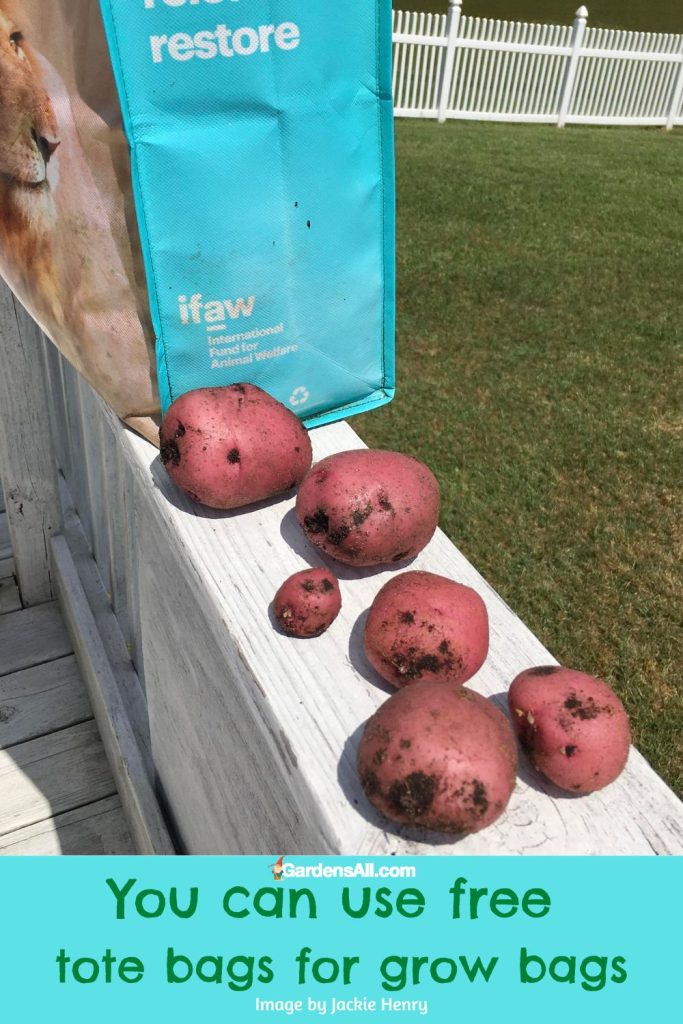
Grow Bag Gardening Tips
Plan your grow bag garden placement before filling your bags with soil. It’s a lot easier to move empty bags around, so this will save your back and stamina for other tasks… and there are always other tasks!
But when you do need to lift a soil-filled bag, remember to lift with your legs, not your back. Also, to use handy tools like hand trucks and garden wagons.
Organizing Your Grow Bag Garden
Consider the type of plants and growing time and needs, as you would a regular garden =, such as:
- Leafy plants – will spread out
- Vining plants – will need a trellis
- Root crops
- Herb garden
- Salad garden
- Space needed
- Sun needs
- Water source and needs
Setting up Your Grow Bag Garden
Setting up your grow bag garden is a great weekend project, especially if you’re working full time. However, some of the planning and planting will depend on what you’re planting, whether you’re direct sowing seeds or transplanting seedlings, and the planting and growing time of your specific plants.
And of course the good news is that if you decide you want a plant in a different location, it is easy enough to move!
Punching Drain Holes
If your grow bag doesn’t have drain holes in the bottom, while that may not be essential for drainage, it could be helpful toward creating access to the bag for earthworms and beneficial microbes.
After deciding on locations, it is time to prepare your sacks to be filled with soil and plant your seeds and/or seedlings. We recommend placing your bags in place and wheeling your soil in a wagon or wheelbarrow to that location. You can then fill your grow bags directly from the soil bag in its elevated position.
Grow Bag Soil Amendments
Most good organic garden soil comes with plant nutrients, so just note whether you’re planting anything with more specific needs. You can also add your own organic compost and fertilize your plants periodically as you would normal in-ground or raised bed garden plants.
Compost tea is a good standby to make and use.
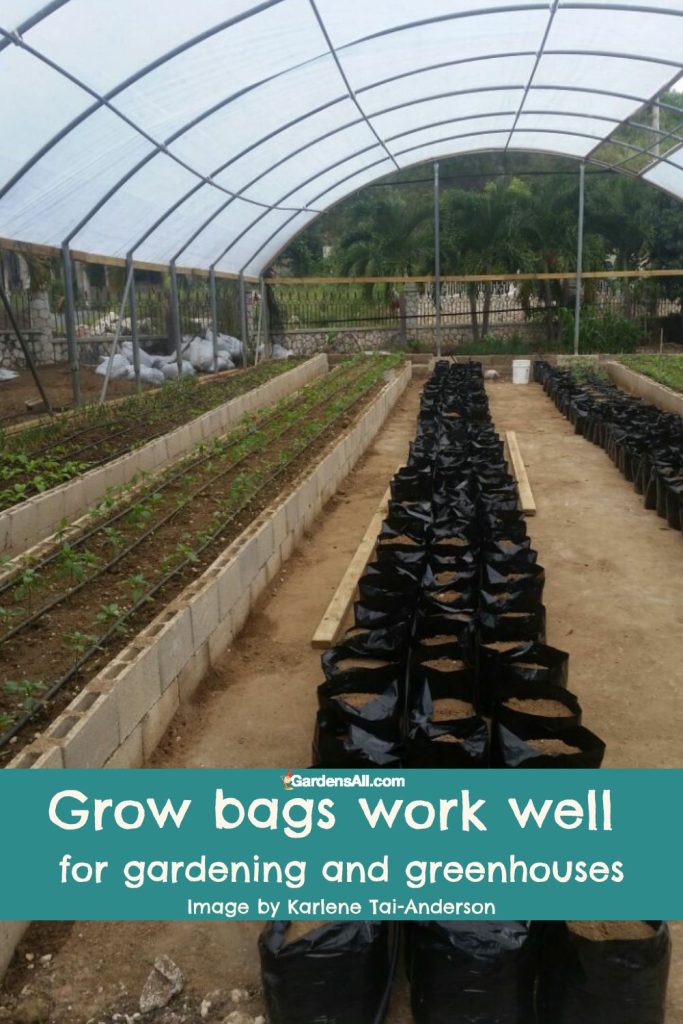
Burlap Sack Grow Bag Gardening
If you happen to have a free source for burlap bags, that’s awesome! You can use those burlap bags for grow bag gardening.
Free Sources for Burlap Bags
- Coffee bags – check with local coffee shops and/or coffee roasters. These are often the very best places to find free burlap bags.
- Feed & Seed Mills and Home Stores – these often purchase supplies in large burlap bags. E.g:
- Ace Hardware
- Big box home stores like Lowe’s and Home Depot
- Tractor Supply
- Pet stores
- Restaurants – check with local restaurants if you don’t buy bulk bags for yourself
- Bean bags
- Popcorn bags
- Rice bags (and other grains)
You can also purchase burlap grow bags in all sizes, and the largest ones can also be used as frost covers for plant protection.
For more easy growing options, consider soil bag gardening.
Tips on Growing in Burlap Grow Bags
Check burlap bag surface and seams for holes and rips so you won’t lose soil and seeds. Stitch any gaps or toss if too tattered. Bags that are too tattered can be ripped open and laid flat as a layer under mulch around plants and garden pathways.
Once you’ve amassed your burlap grow bags place them where you want them to be in your grow bag gardening arrangement. Then fold the tops down over the lower half of the bag to make the bag sturder and easier to fill with soil.
With this fold complete, stand your sack upright and open it as wide as you can. This will be tough to do in a uniform manner, but the goal is mainly to open it wide enough to receive soil.[1]https://www.veggiegardener.com/out-of-garden-space-burlap-sacks-can-help/
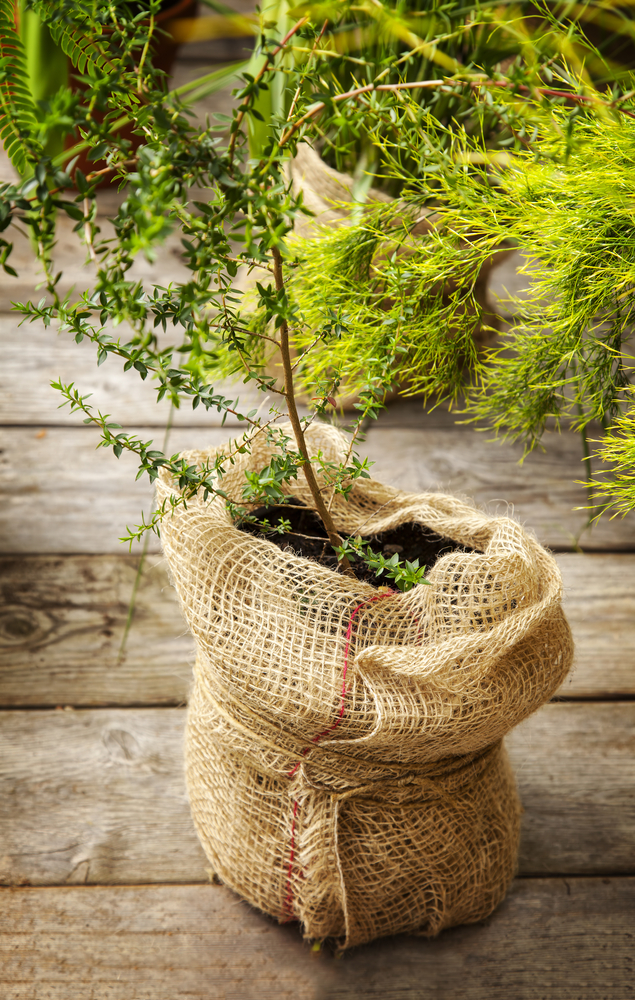
Pros and Cons of Grow Bag Gardening
There’s no perfect way to garden, and what’s in place can change. In fact, change in the garden by way of crop rotation and companion planting is essential for healthier plants, and towards mitigating garden pest problems.
7 Pros of Grow Bag Gardening
- Easier and quicker –
- no ground prep needed
- set up is easy to do, adjust, and change
- easy to grow themed plant bags, such as an herb bag; salsa bag; stir fry bag, etc.
- Flexible – more flexible than pots or rows
- Free or cheap containers – less expensive than pots and planters
- Mobile –
- Easy to move and adjust plants as needed for more sun, better spacing, etc.
- Companion planting –
- able to move place pest repellent plants to problem areas
- able to move pollinator friendly plants to area that need more pollinator assistance
- More – you can grow more in less space
- Stronger root structure develops – roots avoid exterior air (aka “air pruning”), and subsequently, grow denser on interior root systems.
- Trellis friendly – you can place simple trellis systems such as this teepee trellis directly in the grow bag.
2 Cons of Grow Bag Gardening
- Needs watering more often
- Some don’t like the appearance
The biggest problem with grow bag gardening is water. Most raised bed gardens tend to lose water more quickly than in ground rows, and grow bags are the worst at water retention due to evaporation. For some, it’s appearance, where they prefer the appearance of traditional in-ground rows or raised beds.
Otherwise, as you can see, there’s a much longer list of advantages of grow bags versus disadvantages.
But what are your thoughts and experiences? We’d love to know and add them here towards helping others discover what may work best for them.
Grow Bed Gardening Video
This is a super insightful and helpful video by Kevin Espiritu, author of the book, Grow Bag Gardening.
Growing Veggies in Sacks
Joey, of The Wisconsin Vegetable Gardener, shares how to plant potatoes, tomatoes, and peppers in burlap bags they got for free from a local cafe.
Have you ever grown food using this method? Let us know how it worked / is working for you!
We are an online gardening publication sharing all things garden related! Including urban farming, family gardening, homesteading, gardening for profits, and more. We’re all about growth!
References

